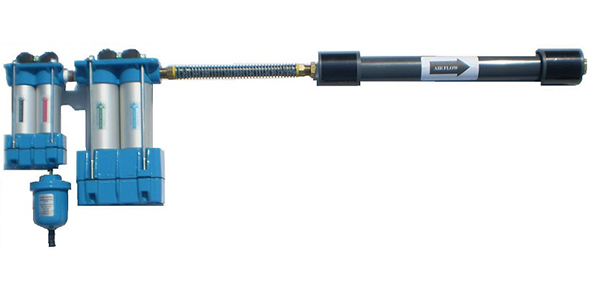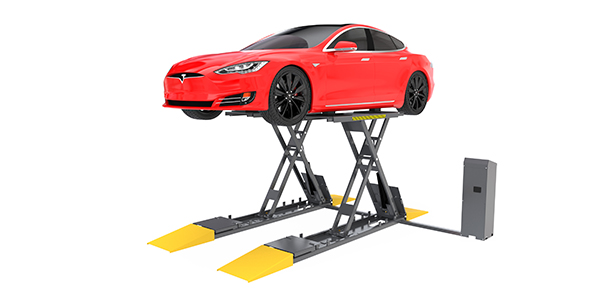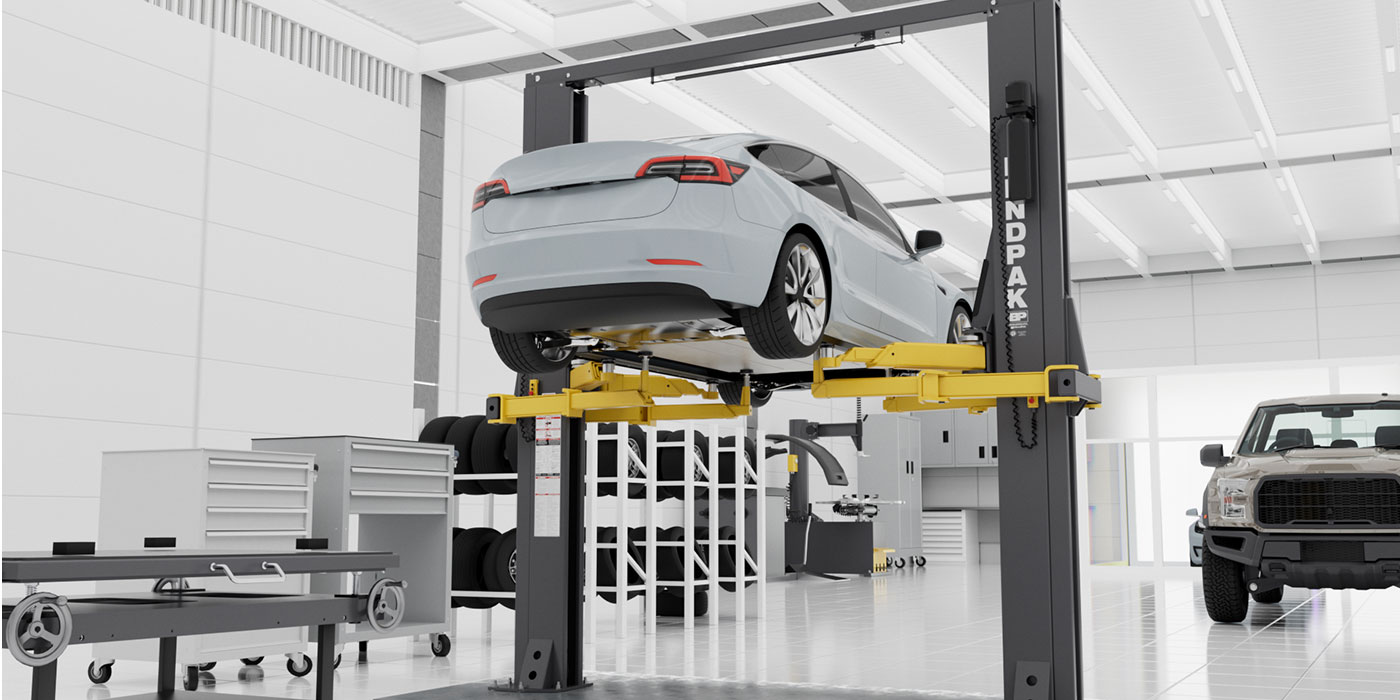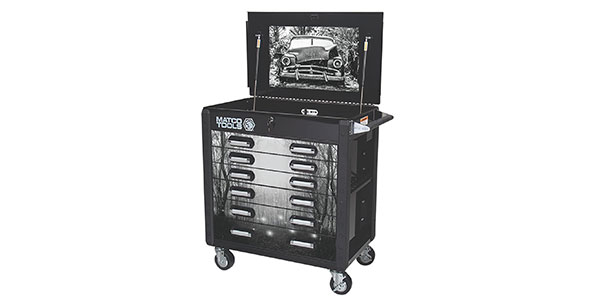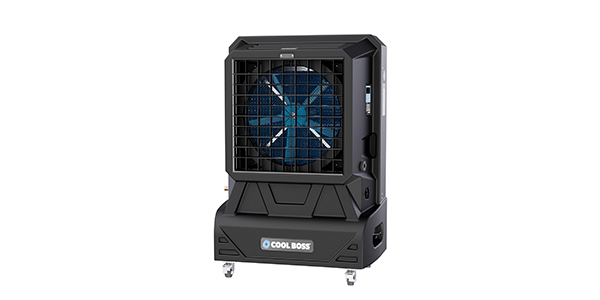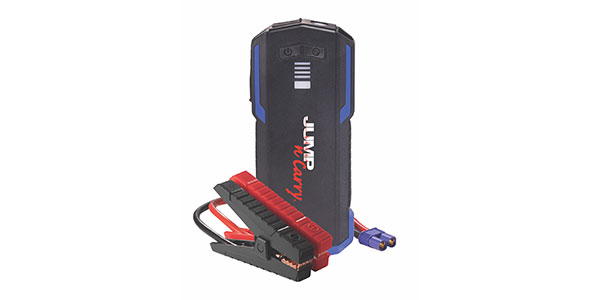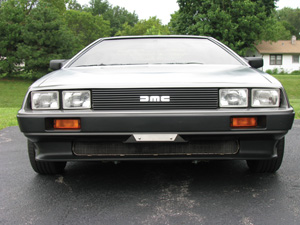 By David Swingle, owner
By David Swingle, owner
DeLorean Motor Company Midwest
Crystal Lake, IL
Although production ceased almost 30 years ago, there is still an amazing and broad-based interest and following of the DeLorean car due to a set of circumstances very unique in the collector-car realm.
DeLorean Motor Company is now a network of shop facilities in the U.S. and Europe focused exclusively on restoring and maintaining the cars, providing parts and advice to owners and prospective owners, and promoting the continued enjoyment and visibility of the cars.
A Brief History
John DeLorean was the general manager of the Chevrolet division of General Motors until 1972, when he was moved into GM corporate and then left the company, even though he was in the running to be the next CEO.
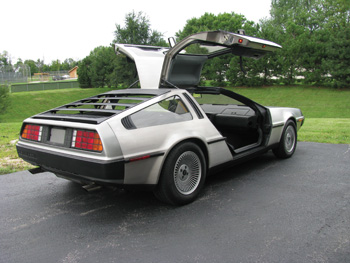 His move from GM to forming his own company, getting a car designed and into the market is the subject of several books, and more than we can go into here.
His move from GM to forming his own company, getting a car designed and into the market is the subject of several books, and more than we can go into here.
DeLorean automobiles were produced in Belfast, Northern Ireland, in 1981 and 1982. Engineered in the U.K. under contract by Lotus, the DeLorean is considered to be a European car intended initially for the U.S. market, with potential for expansion to the European market in later production.
A few cars were exported to the Middle East, and in recent years, enthusiasts have exported several hundred from the U.S. to Europe.
Due to the Lotus influence and the decision to produce the car in Europe, its mechanical content is very heavily based on European cars of the late ’70s.
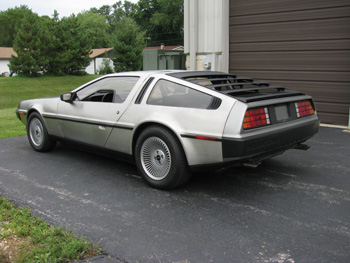 The key styling elements of the car are, of course, the stainless steel body skin and the gullwing doors.
The key styling elements of the car are, of course, the stainless steel body skin and the gullwing doors.
A goal given by John DeLorean to the design team was that any parts visible or touched by the customer had to be unique to the car, but anything underneath needed to be production-based for economic reasons.
Crash safety was also a key goal leading to the rear engine design.
The DeLorean was often referred to as “the ethical sports car,” leading to the relatively small V6 engine and stainless-over-fiberglass construction with good fuel economy and long life in mind.
The car was very well engineered considering the time allowed, but still had several weak spots (mostly the electrical system) leading to reliability issues that would have (and have) eventually been worked out had the company continued.
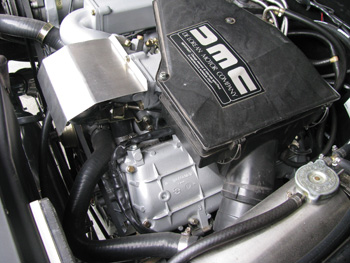 The DeLorean was launched in the U.S. market in early 1981 — unfortunately right in the middle of a severe recession accompanied by high interest rates — a tough time to launch a high-end car with lofty production number goals.
The DeLorean was launched in the U.S. market in early 1981 — unfortunately right in the middle of a severe recession accompanied by high interest rates — a tough time to launch a high-end car with lofty production number goals.
The car was priced at $29,000 — about $10,000 more than a Corvette at the time and equivalent to a Porsche 928, a well-known sports car brand with a V8 engine. Approximately 10,000 cars were produced, sold as model years 1981, ’82 and ’83.
The 1983 cars were actually produced after the demise of the company, in the original factory by the original workers, but under control of another company who had taken control of the DeLorean Company’s assets at the time of failure and John’s arrest.
(DeLorean was charged with conspiracy to distribute cocaine [1982] and fraud and other financial misdeeds [1985]. He was acquitted of both charges.)
This is where the lucky circumstances that get us where we are today began:
When the production ceased, the company that had taken over the assets, (Consolidated International) made the fortuitous decision to pack up and ship all of the remaining parts from the factory to its warehouse facility in Columbus, OH. Their vision was to continue to support owners for the expected typical life cycle of the vehicle for the next 10 years or so.
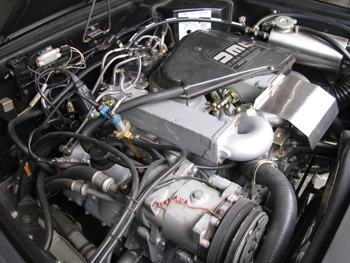 When the DeLorean Motor Company closed down, they of course stopped paying dealers to repair the cars under warranty. As dealers were not inclined to fix cars for free, they would refuse to repair the cars. There was also certainly a time where getting parts was difficult as the company business structure collapsed.
When the DeLorean Motor Company closed down, they of course stopped paying dealers to repair the cars under warranty. As dealers were not inclined to fix cars for free, they would refuse to repair the cars. There was also certainly a time where getting parts was difficult as the company business structure collapsed.
As the mechanical failures often took the car off the road, they were difficult to re-sell (and worth less than half the new price even when only a year or two old).
This led to a large number of the cars just being “parked” by their often well-to-do owners, with very low miles on the odometer, often in nice garages or storage buildings. We still find these cars today!
The other “lucky circumstance” was the decision to cast the DeLorean as the “hero car” in the tremendously popular Back to the Future film series in the mid-1980s. This has lead to the car’s continued recognition by people of all ages and income levels. We deal with owners and prospective owners from pre-driving age to 80 years old. Some people are into the car because of the movie, some in spite of it.
The Car
The DeLorean itself, other than the stainless outer body, gullwing doors and rear engine design, is not particularly exotic for its time.
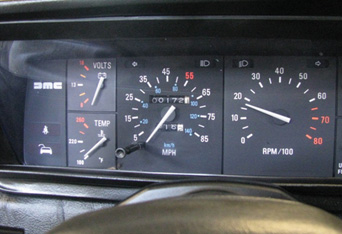 As most of the cars are now found with very low mileage, much of the work we do on them is related to long-term storage, often decades. Even in clean climate storage, lots can go wrong in 15-20 years of non-running.
As most of the cars are now found with very low mileage, much of the work we do on them is related to long-term storage, often decades. Even in clean climate storage, lots can go wrong in 15-20 years of non-running.
The usual old-car issues apply (including cleaning out remains from generations of mice) and a few DeLorean-specific twists.
The engine is known as the PRV-V6, (Peugeot-Renault-Volvo), produced by Renault in France. An extremely common engine in Europe, it was originally architected as a V8 but during development the initial gas crisis hit, so it was hurriedly re-designed into an odd-fire V6.
As used in the DeLorean, it is a wet sleeve aluminum block engine with single chain-drive overhead cams with direct followers, i.e., no hydraulic lifters.
Periodic valve adjustment is required.
U.S. technicians may recognize this engine architecture as it was used in high-end Volvos of the era. It also made its way into some of Chrysler’s line during its partnership with Renault, notably in the Eagle Premier, although by then it was updated to electronic fuel injection and even-fire crank spacing.
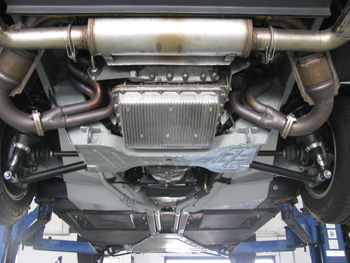 The engine is vulnerable to overheating problems caused by failure in the electrical system that operates the cooling fans, or failure of the belt-driven water pump. Overheating will cause warped heads, blown head gaskets, dropped valve seats, etc.
The engine is vulnerable to overheating problems caused by failure in the electrical system that operates the cooling fans, or failure of the belt-driven water pump. Overheating will cause warped heads, blown head gaskets, dropped valve seats, etc.
Ignition is conventional magnetic-triggered distributor and coil. No real issues here — other than the occasional owner who decides to pressure-wash the engine and fills up the spark plug wells with water.
Fuel injection is Bosch K-Jetronic with Lambda, similar to that used on contemporary Porsche, Mercedes-Benz and VW cars. This is a high-pressure mechanical fuel injection system with an external regulator using a single O2 sensor as its input.
The fuel injection system is very trouble-free, until it gets hit with contaminated fuel either from water in the tank or long-term storage causing fuel deterioration. Probably the most common work we do is the rebuild of the entire fuel system on cars recently brought out of long-term (10 years+) storage.
There are no shortcuts here; the process must include cleaning the fuel tank and lines, and replacing all deteriorated parts. Shortcuts here will just cause reworks. We often see shops just replace the fuel pump and promptly move the junk from the bottom of the tank right into the expensive fuel distributor and injectors.
The fuel tank is plastic and more or less indestructible, although most techs seem to find the baffle setup a bit, well, baffling.
Two transmissions were used, also provided by Renault: a 5-speed manual transaxle and a 3-speed automatic transaxle. A unique feature of this drivetrain is that the transmission can be used in either front- or rear-drive cars as the differential is reversible (during assembly!).
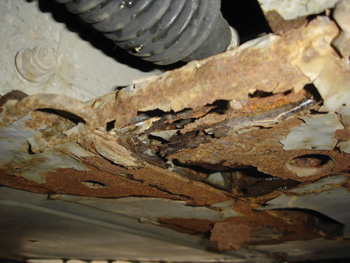 The automatic transmission is actually two separate systems with separate oils, 90W for the differential and Dexron III for the transmission.
The automatic transmission is actually two separate systems with separate oils, 90W for the differential and Dexron III for the transmission.
The automatic’s common failure point is an electronic shift computer that is extremely failure-prone. If the computer is not repaired soon after failure, damage to the transmission will occur since the common failure mode is to skip first or second gear.
The manual is a single box with 90W oil only. The clutch is hydraulic, and a very common need is to replace the line from the master to slave cylinder, as the factory line is plastic and prone to swelling when hot (a design feature inherited from Lotus!).
The replacement is a braided flexible line that resists swelling. If line replacement is ignored long enough, crashing the gears will cause internal transmission damage.
The suspension is typical for Lotus — with parts doing double duty. The front suspension is an upper wishbone/single lower arm with the sway bar also acting as the lower thrust arm. A conventional shock absorber is used. The rear uses a long trailing arm, with two control arms and a coil-over-shock arrangement.
Steering is manual rack-and-pinion.
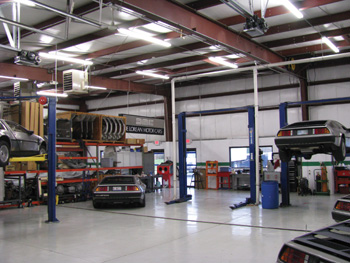 One issue that often surprises unwary buyers is the epoxy-coated mild steel frame, which after this much time is very vulnerable to rust if the car was operated in salt-belt climates or stored in a damp barn for a long time.
One issue that often surprises unwary buyers is the epoxy-coated mild steel frame, which after this much time is very vulnerable to rust if the car was operated in salt-belt climates or stored in a damp barn for a long time.
Brakes are also very conventional, consisting of four-wheel solid disks (acceptable due to the heavy rear weight bias and relatively light overall vehicle weight).
Techs familiar with other cars of the period will recognize the Girling system. The brake system is vacuum-boosted with a cable-operated emergency brake grabbing the same disc. Fluid is specified as DOT 4, and we generally recommend a specific brand that’s more compatible with the natural rubber seals used in this system.
DeLorean Dilemmas
The truly unique features of the car lead to the most challenging service issues. The gullwing doors are opened by a combination of torsion bar and gas strut. A common problem is repairing the mechanism after damage caused by a prior tech attempting to overcome a weak gas strut by putting more tension on the torsion bar.
This leads to jamming the bar in the clamp or hinge, or worse, breakage of the now-rare torsion bar itself.
The other service challenge is body work. The 304 grade stainless steel is much stiffer than typical body steel, so it does not respond as well to paintless-dent-repair procedures.
It also obviously can’t be repaired with body filler since there is no paint to cover things up. We use a combination of old-school pick-and-file techniques along with other specialty tools required to put the original grain back into the steel after the repair.
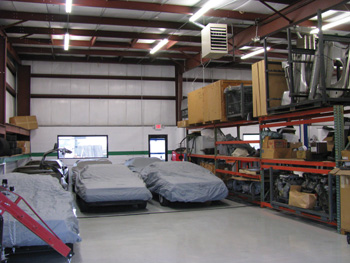 The Company Today
The Company Today
DeLorean Motor Company (Texas) is the primary company in the current six-dealership network. The company is owned by Stephen Wynne, an Englishman who started out working on DeLoreans when they were introduced. The remaining factory and dealer inventories are stored in a 40,000 sq. ft. building in Houston (Humble), where there is also a service shop and where “New Build” cars are currently manufactured.
The other locations are DMC Midwest near Chicago, DMC Florida, DMC Northwest in near Seattle, DMC California in the Los Angeles area and DMC Europe just outside of Amsterdam. Each of the locations is a full-service dealer, all stocking parts, repairing, restoring cars and selling DeLorean automobiles.
The company continues to source parts worldwide for the car as initial parts stocks run out or become otherwise unavailable, including parts as complex as the steering rack and molded interior parts such as the entire dash panel.
To Be Continued…
In an upcoming article I’ll discuss performance enhancements for the DeLorean, including things that were done “back in the day,” as well as current designs and upgrades.


